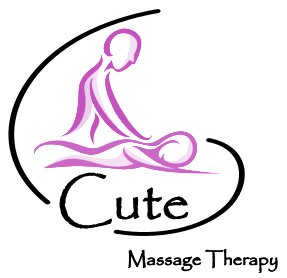Affordable prices
The Power of Massage in the Workplace: Enhancing Employee Well-being and Productivity
In today's fast-paced work environment, stress has become an all-too-common companion for many employees. Tight deadlines, heavy workloads, and the constant pressure to perform can take a significant toll on both mental and physical health. The consequences of chronic workplace stress are far-reaching—ranging from decreased productivity and higher absenteeism to more serious health issues such as anxiety, depression, and chronic pain. It's no surprise that employers are increasingly seeking effective ways to support their employees' well-being and maintain a healthy, productive workforce.
One wellness initiative that has been gaining traction in recent years is the integration of massage therapy into the workplace. Workplace massage programs offer a practical and accessible solution to the growing problem of occupational stress. By providing employees with regular opportunities to relax and recharge, companies can help reduce stress levels, improve overall job satisfaction, and enhance productivity. This blog will explore the many benefits of incorporating massage into the workplace.
The Importance of Massage at Work
Employee Well-being
Promoting employee well-being is more than just a nice-to-have; it is a critical component of a successful and sustainable business strategy. When employees feel supported and cared for, they are more likely to be engaged, motivated, and loyal to their organization. Investing in employee well-being initiatives, such as workplace massage programs, sends a powerful message that the company values its people and is committed to creating a positive work environment.
The benefits of prioritizing employee well-being extend beyond just improved morale. Research has shown that employees who experience high levels of well-being are more productive, creative, and better equipped to handle the demands of their jobs. They are also more likely to collaborate effectively with their colleagues, leading to stronger teamwork and better overall business outcomes. In essence, a healthy and happy workforce is a productive one, and companies that prioritize well-being are likely to see significant returns on their investment.
Preventative Health Measures
One of the most effective ways to support employee well-being is by taking a proactive approach to preventing workplace-related health issues. Massage therapy offers a powerful tool for addressing common physical and mental challenges that arise from work-related stress. Regular massage sessions can help alleviate muscle tension, improve circulation, and promote relaxation—all of which contribute to reducing the risk of chronic pain and musculoskeletal issues that can develop from prolonged periods of sitting or repetitive tasks.
Beyond the physical benefits, massage therapy also plays a crucial role in mental health. By helping to lower cortisol levels and stimulate the release of endorphins, massage can reduce feelings of stress and anxiety, leaving employees feeling more relaxed and rejuvenated. This preventative approach not only helps employees stay healthy but also reduces the likelihood of burnout and mental fatigue, which are common consequences of unmanaged workplace stress.
Overall
By integrating massage into the workplace, companies can take meaningful steps to protect their employees' health and well-being, ultimately leading to a more resilient and productive workforce. The importance of massage at work cannot be overstated, as it provides both immediate relief from stress and long-term benefits that contribute to a healthier, happier work environment.

Oil Burner. Image: Unsplash @Hans Vivek
Implementing Massage Programs in the Workplace
On-Site Massage Services
Introducing on-site chair massage services is an excellent way to bring the benefits of massage directly to your employees without disrupting the workday. These sessions typically involve a licensed massage therapist coming to your workplace with a portable massage chair, which is designed specifically for short, comfortable sessions. The massages are usually 10 to 20 minutes long and focus on key tension areas such as the neck, shoulders, and back.
Setting up on-site massage services is relatively simple. First, identify a quiet, private space within your office where the sessions can take place, such as a small conference room or an unused office. Next, work with a licensed massage therapist or a company that specializes in corporate wellness services to establish a schedule that suits your team's needs. Ensure that the sessions are easy for employees to book, whether through an online scheduling system or a sign-up sheet. On-site massages are convenient, require minimal equipment, and can be tailored to fit into employees' busy schedules.
Partnering with Local Therapists
Another effective approach to implementing a workplace massage program is by partnering with local massage therapists or wellness providers. These partnerships can offer your employees access to discounted or on-demand services that they can use either at work or in their own time.
Working with local therapists provides several benefits. Firstly, it supports small businesses within your community, fostering goodwill and strengthening local connections. Secondly, it allows for flexibility, as employees can choose to schedule massages at a time and location that suits them best, whether it’s during lunch breaks, after work, or on weekends. Some wellness providers may even offer corporate packages that include on-site services, wellness workshops, and discounts on off-site services, providing a comprehensive approach to employee well-being.
Scheduling and Frequency
To maximize the benefits of a workplace massage program and ensure high employee participation, it’s important to consider the frequency and scheduling of sessions. For many workplaces, offering massage sessions once a week or biweekly is an ideal balance, allowing employees to regularly de-stress and maintain their physical and mental well-being.
When determining the schedule, take into account the size of your workforce and the demand for the service. For larger teams, you might need to offer multiple sessions throughout the day or spread them over several days to accommodate everyone. Consider surveying your employees to gauge their interest and preferred times, which will help you tailor the program to meet their needs.
Additionally, it's important to promote the program effectively. Encourage managers to lead by example and participate, and use internal communication channels, such as email newsletters or intranet announcements, to remind employees of upcoming sessions and how to sign up.
Overall
Implementing a massage program in the workplace is a proactive step towards fostering a healthier, happier workforce. By providing on-site massage services, partnering with local therapists, and thoughtfully scheduling sessions, you can create a wellness initiative that not only supports your employees' well-being but also enhances overall productivity and workplace satisfaction.

Consider supporting smaller businesses in your area by finding local therapists. Image: Unsplash @Tim Mossholder
Tips for Employees: Maximizing the Benefits of Workplace Massage
Workplace massage is a fantastic way to relieve stress and improve your well-being, but to get the most out of each session, it’s essential to incorporate complementary self-care practices and communicate effectively with your massage therapist. Here are some tips to help you maximize the benefits:
1. Complement Massage with Self-Care Practices
Stretching: Regular stretching is a simple yet powerful way to keep your muscles flexible and reduce tension between massage sessions. Focus on areas that tend to accumulate stress, such as your neck, shoulders, back, and legs. Stretching for just a few minutes each day can help prevent muscle stiffness and improve your overall posture.
Hydration: Staying well-hydrated is key to maximizing the benefits of massage. Massage helps to release toxins from the muscles, and drinking plenty of water before and after your session aids in flushing these toxins out of your system. Hydration also helps maintain healthy muscle tissue and reduces the likelihood of cramps and soreness.
Mindfulness Exercises: Incorporating mindfulness practices, such as deep breathing, meditation, or yoga, can enhance the relaxation and mental clarity you gain from massage. These exercises help to manage stress and keep you mentally centred, allowing you to maintain the calm and focus you achieve during your massage sessions.
Good Posture: Maintaining proper posture throughout the day can prevent the recurrence of muscle tension and discomfort. Be mindful of your sitting and standing positions, and make adjustments as needed to keep your spine aligned. Using ergonomic furniture and taking regular breaks to move around can also help support good posture. Check out one of our last posts for further guidance on good posture.
2. Communicate Effectively with Your Massage Therapist
To get the most out of your massage session, it’s crucial to communicate openly and clearly with your massage therapist. Here are some tips for effective communication:
Be Specific About Your Needs: Before your session begins, take a moment to identify any specific areas of discomfort or tension you’d like the therapist to focus on. Whether it’s a stiff neck, sore lower back, or tight shoulders, let your therapist know exactly where you need attention.
Share Your Preferences: Everyone’s body is different, and it’s important to communicate your preferences regarding pressure and techniques. If you prefer a lighter touch or need deeper pressure on certain areas, don’t hesitate to let your therapist know. This ensures the massage is tailored to your comfort and needs.
Provide Feedback During the Session: If something doesn’t feel right during the massage—whether it’s the pressure, temperature, or a particular technique—speak up. Your therapist is there to help you feel better, and they’ll appreciate your feedback to adjust the session accordingly.
3. Determine the Right Frequency for Your Massages
The frequency of your massage sessions will depend on your individual needs and the nature of your work. Here are some guidelines to consider:
Weekly or Biweekly Sessions: For those dealing with chronic stress, muscle tension, or physically demanding jobs, weekly or biweekly massages can be very beneficial in maintaining optimal physical and mental health.
Monthly Sessions: If your stress levels are moderate and your work is less physically demanding, a monthly massage may be sufficient to help you relax and prevent the buildup of tension.
As-Needed Sessions: If you experience occasional stress or discomfort, you may choose to schedule massages on an as-needed basis. Listen to your body and book a session whenever you feel tension creeping in or when you need a mental reset.
Concluding Remarks...
We encourage both employers and employees to consider the long-term benefits of incorporating massage therapy into the workplace. Not only will it help prevent workplace-related health issues, but it will also contribute to a more positive, supportive work culture where employees can thrive.
For employees, maximizing the benefits of workplace massage is as simple as complementing massage sessions with self-care practices like stretching, hydration, mindfulness exercises, and maintaining good posture. Effective communication with therapists and finding the right frequency of massage can also ensure that you get the most out of each session.
If you’re ready to explore the benefits of workplace massage, we invite you to reach out to local massage therapists or wellness providers like Cute Massage Therapy. Together, we can create a customized program that meets the unique needs of your workforce and fosters a healthier, happier workplace. Contact us today to learn more about how we can help you integrate massage therapy into your organization!
Header image: Unsplash @Raj Rana







